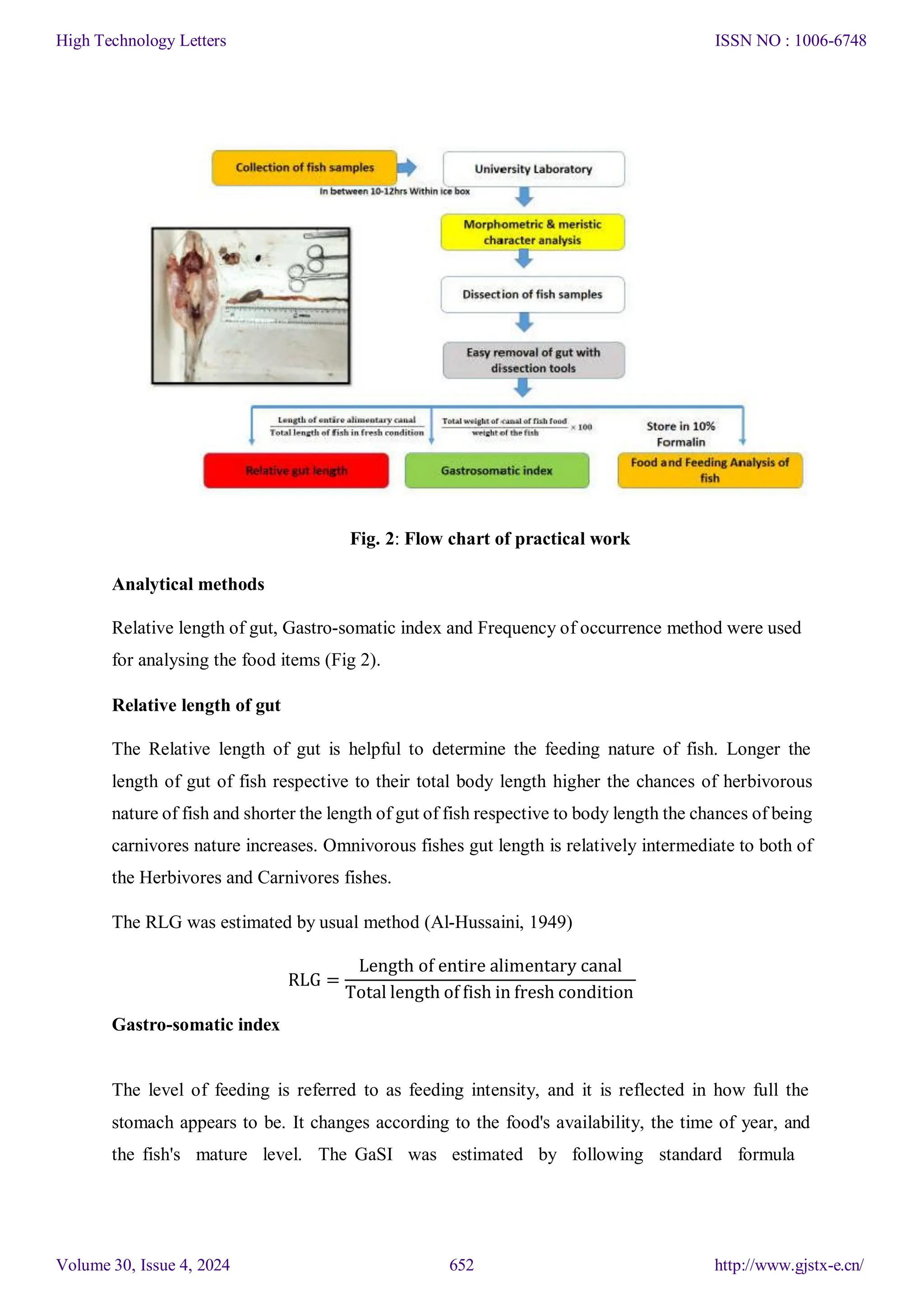This study investigates the feeding habits of six freshwater fish species, emphasizing their dietary preferences and implications for aquaculture and fisheries management. Key findings reveal a variety of diets among the species, including omnivorous, carnivorous, and periphytonic feeding behaviors, which are crucial for developing effective fish management practices. The research contributes to understanding the ecological health of aquatic ecosystems and supports sustainable aquaculture in India.




















